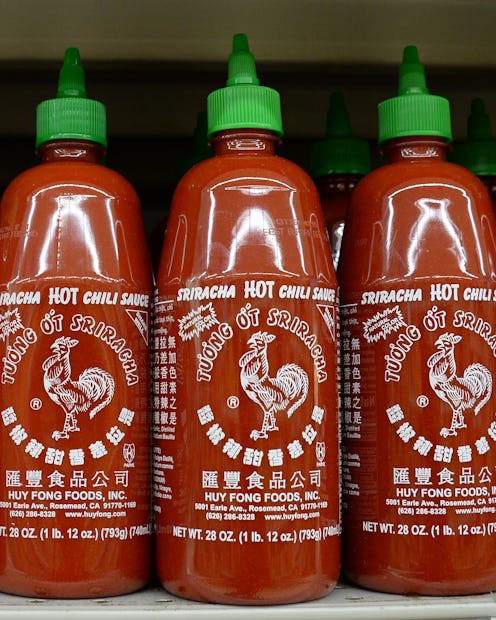There are very few foods in this life that don't pair well with Sriracha: Eggs, tacos, soups, pizza, mac and cheese, stir fry, wings — you name it, and there's probably a way to incorporate rooster sauce into it. But have you ever wondered what makes Sriracha so hot? A new video from Wired took it apart to see what factors make it so perfectly fiery. Ready to delve into the science of Sriracha?
The name Sriracha comes from Si Racha, the name of a coastal city in a province in Eastern Thailand. It was invented by a local woman named Thanom Chakkapak, who first made it for family and friends 80 years ago. Some of her friends advised her to start selling it commercially, and when she did, it was an instant hit. Initially, Sriracha was used for seafood since it was created by a seaside city, but people in Thailand also eat it with omelettes, rice, raw oyster, and pad Thai. These days, we're all most familiar with the Huy Fong Foods version — the one with the distinctive rooster on the bottle.
So how do the ingredients in Sriracha combine to make a flavorful explosion of tastiness? Let's take a look:
There are four separate factors that go into making the spiciness (and tastiness!) or Sriracha so pungent
The first is red chili peppers.
The chilis add spice due to the compound called capsacin that's actually an irritant to mammals.
This irritant is actually what makes everything so hot.
As soon as the capsacin from the peppers hits your mouth, the pain and heat levels in your brain go up.
The garlic in Sriracha activates the same protein responsible for the sting of wasabi.
In addition to the sting of the garlic and spice of the chili pepper, there are five other taste elements.
They are: Sweet, salty, sour, bitter, and savory.
When your taste receptors detect sugar on your tongue, they tell your brain that what you're eating is sweet.
But that doesn't stop your brain from also detecting the salt in the sauce.
This combination is what creates that unique sweet and salty flavor Sriracha has.
Vinegar in the Sriracha enhances both the flavor and the shelf life of the hot sauce.
And xantham gum is the binding agent.
This is what allows for all the combined flavors to become a sauce which you can use to flavor any food it will stick to.
And that is the story of Sriracha! Now you have a little more insight into what you're eating.
Images: Wired/YouTube (9)
